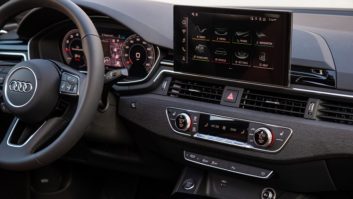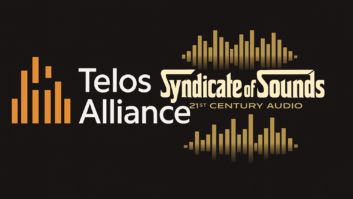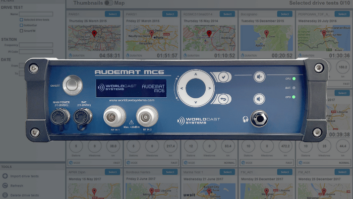It seems like April approaches faster each year � even though this year�s NAB Show is later than usual.

If you�re attending the annual convention in Las Vegas, you�ve undoubtedly already made airline and hotel arrangements and you�ve registered for the convention itself.
But before you head to Sin City for full immersion in all-things-broadcast, make sure you know what engineering sessions are waiting. Recurring themes include IP, cybersecurity/IT, HD Radio/ digital radio, STL tips and more.
Here are a few that I�ve picked out as being of particular interest to radio broadcast engineers. See the full schedule online at http://nab17.mapyourshow.com/7_0/sessions/session-grid.cfm.
Saturday, April 22
9 � 10:30 a.m.
BROADCASTERS: DON�T JUST GO IP, GO IT
Presenter: Kieran Kunhya, founder and managing director, Open Broadcast Systems.
As expected, IP continues to dominate the discussion at the NAB Show. More and more broadcast infrastructure is IP-based; everything from in-studio AoIP architecture to STL systems. In this session, however, engineers are encouraged to consider an IT-based approach in order to reap additional cost benefits and to gain access to more functionality.
Saturday, April 22
1:30 � 3 p.m.
GROUNDING AND BONDING ARE FUNDAMENTAL TO RELIABILITY
Presenter: David Brender, national program manager, Copper Development Association
This presentation encourages a more rigorous approach to grounding and bonding techniques in electrically sensitive broadcast facilities. Brender says the National Electric Code sets forth, at best, minimal safety standards that often underserve the critical needs of broadcast systems. Greater attention to grounding and bonding is better for equipment and can prevent downtime � plus, it is a cost-effective measure with high ROI.
Saturday, April 22
1:30 � 3 p.m.
SATELLITE VSATS FOR BROADCAST STL
Presenter: Jim Dalke, CEO, Dalke Broadcast Services Inc.
Engineers still face the same age-old problems concerning STL installation. No line-of-sight to the transmitter location, no landline carrier available at the transmitter site for IP or T1 and sometimes, the 950 MHz spectrum is too crowded. However, there is a perfect storm brewing: Due to high demand, satellite services are becoming less expensive, plus, very small aperture terminal advancements are making satellite links more available to broadcasters. In this paper, Jim Dalke will present the usage of VSAT technology as a viable option to traditional STL installation hardships.
Saturday, April 22
5 � 5:30 p.m.
THE VOA MUSEUM
Presenter: Jay Adrick, technology advisor and consultant, GatesAir
Radio historians will enjoy the story of the Voice of America and radio�s role in World War II. This presentation is a production of the VOA Museum in Mason, Ohio.
Sunday, April 23
9:30 � 10 a.m.
THE EFFECTS OF BIT RATE REDUCTION ON ACOUSTICAL WATERMARKS FOR RATINGS SYSTEMS
Presenter: Paul Shulins, Greater Media
Depending on market size, stations have the resources to employ the Portable People Meter, therefore tagging the market as a �PPM market.� PPM encoding is important for ratings measurements, and it requires listeners to wear the meter on their belt. For the technology to work, PPM encoding is used. However, multiple factors are in play concerning the audio data bitrate and its effect on the PPM watermark. This paper will address the results of rigorous testing done using several stations in Boston.
Sunday, April 23
10 � 10:30 a.m.
THE COMING VIRTUALIZATION OF RADIO STUDIOS, OR KISS YOUR RACKS GOODBYE!
Presenter: Michael Dosch, director of virtual radio products, Lawo
We�ve all seen the miniaturization of radio broadcast plants. Studios are less involved with fewer and fewer moving parts. Automation systems pack a considerable punch in one little box. Dosch explains how technological advancements are allowing for even more of the usual moving parts to be virtualized in the studio and the rack room. This saves power and construction costs and a virtualized studio can be built faster than a traditional, physical broadcast facility.
Sunday, April 23
10:30 � 11 a.m.
FM/HD RADIO TIME, LEVEL AND PHASE ALIGNMENT
Presenter: Ben Barber, president/CEO, Inovonics
HD Radio is a beneficial advancement in radio technology primarily because it delivers a sonic improvement to the listener. However, if not implemented correctly, it can become an �ear sore� and potentially create tune-out. The mixing/blending between FM and HD caused by atmospheric conditions and geography are an unavoidable evil, but if delay time, audio level and audio phase alignment are executed perfectly, it will go mostly unnoticed by the listener. This presentation will offer solutions on how to perfect time, level and phase alignment.
Sunday, April 23
11:30 a.m. � 12 p.m.
INTEROPERABILITY OF FM COMPOSITE MULTIPLEX SIGNALS IN AN IP-BASED STL
Presenter: Junius Kim, engineering project manager, GatesAir
The availability of high-bandwidth IP paths has facilitated numerous options for STL consideration. Transporting FM MPX over IP is a viable method, but there are tradeoffs and benefits. Plus, many engineers want to look at STL topology in terms of how existing analog gear should, shouldn�t or even can be used. This paper will present ideas for using legacy gear and current technology for FM MPX over IP.
Sunday, April 23
2 � 2:30 p.m.
STL SOLUTIONS IN AN IT-CENTRIC WORLD
Presenter: Robert Meuser, CTO, Engineaux Inc.
Nobody needs to be reminded how IP has sunk its teeth into nearly everything involving broadcast. The IP takeover has left no facet of radio untouched, including � if not especially � STL technology. This presentation will discuss the wide array of options for radio content transport over IP.
Sunday, April 23
2:30 � 3 p.m.
BUILDING WEB SERVICES TO EMBED ONLINE DATA IN DA B+: ADS, SOCIAL FEEDS, NEWS AND MORE
Presenter: Roman Holzhause, research assistant, Anhalt University of Applied Sciences
Developments abroad in the DAB+ standard are allowing broadcasters to push more content to listeners. The goal is to make social media feeds, artist artwork, visual weather forecasts and several other features available to listeners. This will be accomplished by embedding web data into the radio signal itself, as opposed to the radio pulling data from elsewhere and combining it simultaneously.
Sunday, April 23
3 � 3:30 p.m.
TRANSDIMENSIONAL STEREO EMBEDDING: APPROACHING THE TARDIS EFFECT FOR FM AUDIO
Presenter: Hans van Zutphen, audio processor creator, Telos Alliance
In this presentation, �Dr. Who� fans will appreciate the parallel of the TARDIS to stereo FM audio processing. The idea is centered on producing an experience that affords the listener the benefit of a bigger-than-expected FM stereo image, but without the typically fatiguing effect of overly-processed audio. Technology is already in place that increases perceived loudness up to three decibels without degradation and while staying within legal deviation limits. These advancements have proven successful on all formats, from spoken word to pop music.
Sunday, April 23
3:30 � 4 p.m.
FASTER, CHEAPER AND BETTER: THE RAPID ADOPTION OF AES67 AND AOIP LETS YOU HAVE ALL THREE
Presenter: Greg Shay, chief technical officer, Telos Alliance
Despite its infancy, AES67 has grown quickly as an agent of change for AoIP interoperability and standards. Each April at the NAB Show, we see more available IP-ready gear and IP transport options. As engineers are beginning to rely heavily on data protocols that provide seamless integration between systems, AES67 begs for exploration and more understanding of its benefits. This paper will help engineers understand AES67 in the AoIP world and how it can also improve the performance of telephony and other communications systems.
Sunday, April 23
4 � 4:30 p.m.
SINGLE FREQUENCY NETWORKS FOR HD RADIO
Presenter: Philipp Schmid, research engineer, Nautel
As more and more broadcasters research possibilities for expanding their audience, translator frequencies are becoming less available. A single frequency network offers a solution to limited frequency availability by designing a fill-in translator that retransmits on the same channel as the main station. Broadcasters are also looking for ways to retransmit their HD Radio channels using single frequency networks. In this presentation, we will see lab results and real-world design requirements for building FM and IBOC SFNs, including proper synchronization techniques.
Wednesday, April 26
4:30 � 5 p.m.
IS YOUR NETWORK REALLY SECURE?
Presenter: Wayne Pecena, director of engineering, Texas A&M University/KAMU
We see all of our systems migrating, one by one, to IP-based platforms. The majority of our gear is plugged into a network switch or router that, most likely, is seen by and can see the internet. Plus, we may have some feckless co-workers who are unknowingly (and knowingly) inviting intrusions and hacks every time they check their email. In this presentation, we�ll learn ways to monitor our IP networks and get tips and tools for optimizing network security.







